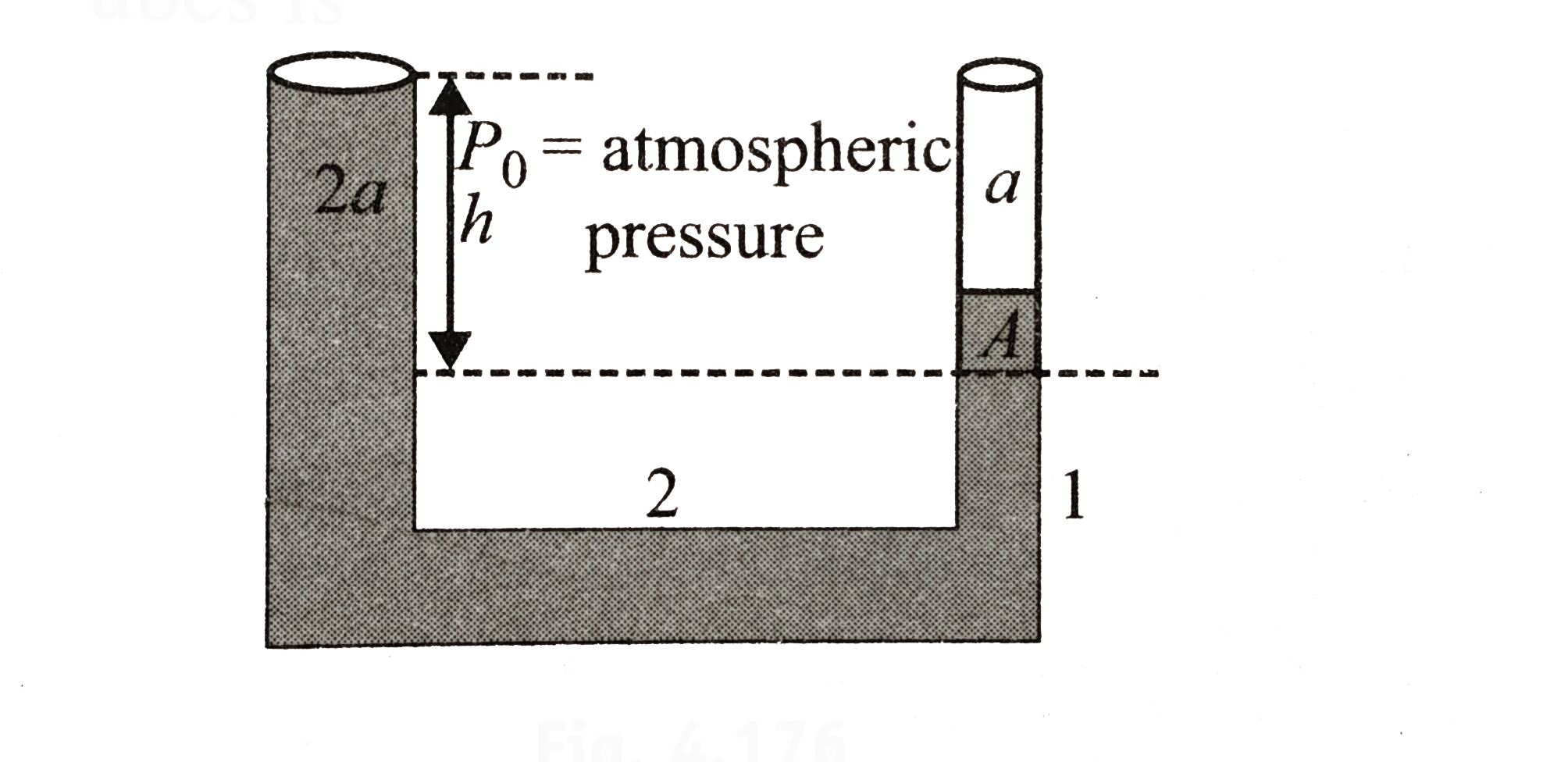A block of mass 100g is moved with a speed of 5.0 m/s at the highest point in a closed circular tube of radius 10 cm kept in a vertical plane. The cross sectiion of th tube is such that the block just fits in it. The block makes wseverl oscillations inside the tube and finally stops at the lowest point. find teh work done by the tube on the block during the process
The correct Answer is:A, D
To solve the problem, we need to find the work done by the tube on the block as it moves from the highest point to the lowest point inside the tube. Here's a step-by-step breakdown of the solution:
Step 1: Convert the mass of the block to kilograms
The mass of the block is given as 100 grams. To convert this to kilograms:
Mass=100g=0.1kg
Hint: Remember that 1 kg = 1000 g.
Step 2: Calculate the initial kinetic energy
The initial speed of the block is given as 5.0 m/s. The formula for kinetic energy (KE) is:
KE=12mv2
Substituting the values:
KEinitial=12×0.1kg×(5.0m/s)2=12×0.1×25=1.25J
Hint: Ensure you square the velocity before multiplying by mass.
Step 3: Determine the final kinetic energy
At the lowest point, the block comes to rest, so the final kinetic energy is:
KEfinal=0J
Hint: The block stops, which means its speed is 0 m/s.
Step 4: Calculate the change in kinetic energy
The change in kinetic energy (ΔKE) is given by:
ΔKE=KEfinal−KEinitial=0−1.25=−1.25J
Hint: The change in energy can be negative if the final energy is less than the initial energy.
Step 5: Calculate the work done by gravity
The work done by gravity (W_gravity) when moving down a distance equal to twice the radius (2r) is given by:
Wgravity=mgh
Where h=2r and r=0.1m:
h=2×0.1=0.2m
Thus,
Wgravity=0.1kg×10m/s2×0.2m=0.1×10×0.2=0.2J
Hint: Use g=10m/s2 for simplicity in calculations.
Step 6: Apply the work-energy principle
According to the work-energy principle:
Wtube+Wgravity=ΔKE
Rearranging gives:
Wtube=ΔKE−Wgravity
Substituting the values:
Wtube=−1.25J−0.2J=−1.45J
Hint: The work done by the tube is negative, indicating that it is doing work against the motion of the block.
Final Answer
The work done by the tube on the block during the process is:
−1.45J
The mass of the block is given as 100 grams. To convert this to kilograms:
Mass=100g=0.1kg
The initial speed of the block is given as 5.0 m/s. The formula for kinetic energy (KE) is:
KE=12mv2
Substituting the values:
KEinitial=12×0.1kg×(5.0m/s)2=12×0.1×25=1.25J
At the lowest point, the block comes to rest, so the final kinetic energy is:
KEfinal=0J
The change in kinetic energy (ΔKE) is given by:
ΔKE=KEfinal−KEinitial=0−1.25=−1.25J
The work done by gravity (W_gravity) when moving down a distance equal to twice the radius (2r) is given by:
Wgravity=mgh
Where h=2r and r=0.1m:
h=2×0.1=0.2m
Thus,
Wgravity=0.1kg×10m/s2×0.2m=0.1×10×0.2=0.2J
According to the work-energy principle:
Wtube+Wgravity=ΔKE
Rearranging gives:
Wtube=ΔKE−Wgravity
Substituting the values:
Wtube=−1.25J−0.2J=−1.45J
The work done by the tube on the block during the process is:
−1.45J
Topper's Solved these Questions
- WORK AND ENERGYBOOK - HC VERMA ENGLISHCHAPTER - WORK AND ENERGYEXERCISE - Question for Short Answer
16 Videos
- WORK AND ENERGYBOOK - HC VERMA ENGLISHCHAPTER - WORK AND ENERGYEXERCISE - Objective -2
8 Videos
- WAVE MOTION AND WAVES ON A STRINGBOOK - HC VERMA ENGLISHCHAPTER - WAVE MOTION AND WAVES ON A STRINGEXERCISE - Question for short Answer
7 Videos
Similar Questions
A block of mass 2.00 kg moving at a speed of 10.0 m/s accelerates at 3.0 ms2 for 5.00 s. Compute its final kinetic enegy.
View SolutionWater rises in a vertical capillary tube up to a length of 10 cm. If the tube is inclined at 45∘, the length of water risen in the tube will be
View SolutionA block of mass 30.0 kg is being brought down by a chain. If the block acquires as speed of 40.0cm/s in dropping down 2.00 m ,find the work done by the chain during the process.
View SolutionA block of mass m is kept on a platform Platform starts moving upwards with an acceleration of g2 . Find the work done by the normal force on the block in the first one second.
View SolutionA block of mass 30.0 kg is being brought down by a chain. If the block acquires as speed of 40.0cms in dropping down 2.00 m ,find the work done by the chain during the process.
View SolutionIn the figure, the cross-sectional area of the smaller tube is a and that of the larger tube is 2a. A block of mass m is kept in the smaller tube having the base area that of the tube. The difference between water levels of the two tubes is

View SolutionIn the figure, the cross-sectional area of the smaller tube is a and that of the larger tube is 2a. A block of mass m is kept in the smaller tube having the base area that of the tube. The difference between water levels of the two tubes is

View SolutionA block of mass m is placed in contact with one end of a smooth tube of mass M. A horizontal force F acts on the tube in each case (i) and (ii). Then,

View SolutionA circular tube of radius R and across- sectional radius r(r<<R) is filled completely with iron balls of th radius ρ. Iron balls just fitting into the tube . The tension in the tube when it is rotated about its axis perpendicular to its plane with angular velocity ω
View SolutionAs shown in the figure a block of mass 'm' is placed on a smooth wedge moving with constant acceleration such that block does not move with respect to the wedge. Find work done by the net force on the block in time t. (Initial speed is 0)

View Solution
